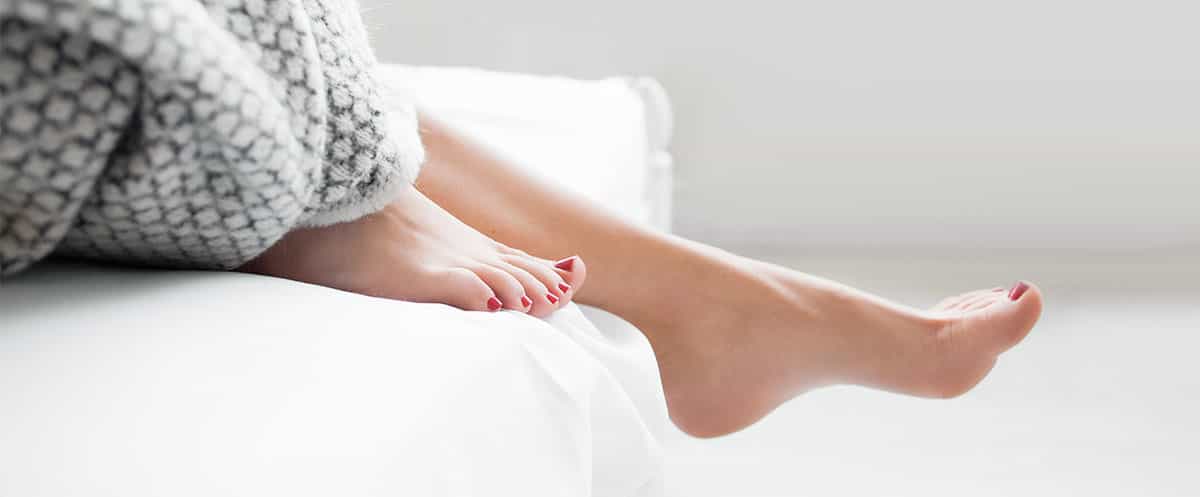-
Products

-
Accessories

-
OneTouch Verio® Control Solution

-
OneTouch Ultra Plus™ Control Solution

-
Carry Cases

-
Mobile
App
-
Getting
Started
-
Learn

-
Customer
Support
Taking care of your feet

Diabetes and your feet: Tips for foot care
Chronically high blood sugar levels in persons with diabetes may cause nerve and blood vessel damage in various parts of the body. One of the most common areas of the body to become affected by nerve and blood vessel damage due to high blood sugar is the feet. Nerve damage in the feet may lead to various conditions from tingling and pain to loss of feeling. Diabetic foot problems greatly increase the risk of infections and loss of limb if left untreated.
Poor wound healing is also a risk when blood sugar levels are high. This could result in foot ulcers which, when left untreated, can lead to serious complications.
Here are some tips to keep your feet healthy:
- Keep blood glucose levels within your target range, with the help of your healthcare team.
- Check your feet daily. Try to do it at a regular time each day, like when you’re washing them or when you take your shoes off in the evening. Check the bottoms of your feet (soles), the nails and in between your toes. Look for cuts, blisters, swelling and redness.
- Wash your feet every day using gentle soap and lukewarm water.
- Dry them carefully, especially between the toes, and apply a moisturizing cream (but not between the toes where moisture can cause germs to grow).
- Take care of your toenails.
- Trim them when needed; smooth the corners with an emery board or file to prevent your nails from growing into the skin. Get help to care for your toenails if you cannot do it yourself safely.
- Protect your feet from heat and cold.
- Avoid using hot water bottles, hot (or cold) packs or electric blankets; test the water temperature before putting your feet in it.
- Always wear comfortable shoes and socks.
- Never walk barefoot or in just socks — even indoors. Choose shoes that fit well and protect your feet with socks that help to keep them dry. Check inside your shoes before you put them on for anything that can irritate your feet.
- Talk to your healthcare providers about calluses, wounds, blisters, irritations, cracks, or foot changes such as color, shape, temperature or pain and follow their advice. You may be asked to see a foot doctor for a thorough foot and footwear checkup.
- Stop smoking — tobacco use reduces the blood flow to the feet and greatly increases the risk for diabetic foot disease and complications.
Sources:
American Diabetes Association Professional Practice Committee. 12. Retinopathy, Neuropathy, and Foot Care: Standards of Medical Care in Diabetes—2022. Diabetes Care. 2021;45(Supplement_1). doi:10.2337/dc22-s012
Doğruel H, Aydemir M, Balci MK. Management of diabetic foot ulcers and the challenging points: An endocrine view. World Journal of Diabetes. 2022;13(1):27-36. doi:10.4239/wjd.v13.i1.27
Related articles
US-VRF-1900014







